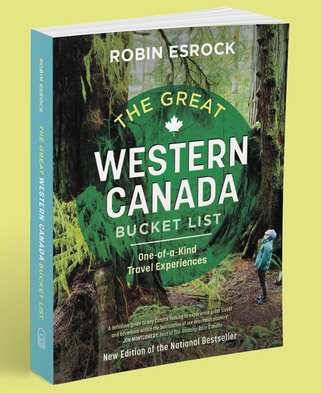|
It was important to stay awake on the overcrowded night train to Dharamshala. If I missed my stop I would end up north at the Pakistani border, where there are enough problems without a confused hack stumbling about. I was scheduled to arrive in a small town called Chakkebank at 3am, which, translated into Indian time, meant anywhere between last Wednesday and the coming of the messiah. Due to a festival, the train was steaming with people, but my sticky-vinyl top bunk afforded some distance from the disjointed beggars, the transsexuals who bring luck for a buck, and the tea guy who somehow managed to get through the throng every ten minutes screaming “Chaaiiiii!!” without inflicting third degree burns with his thermal. I dozed off and awoke to discover two guys had scaled my upper bunk and somehow positioned themselves between my open-scissor legs. When a third tried to join them, I put my foot down. Literally, on his head. I made my station, waited two hours for the bumpy dawn bus into the mountains, and finally arrived in Dharamshala, home of the Dalai Lama and the Tibetan government-in-exile. Like cigarettes, I’m convinced this journey took years off my life. It felt like I had arrived in another country, and in a sense I had. A traveller today can experience more Tibetan culture in Dharamshala than they can in Lhasa, the capital of Tibet. Along with Tibetan refugees, thousands arrive monthly from all over the world to study Buddhism, get involved in various Tibetan movements, catch a glimpse of the Dalai Lama when he is in town, or just enjoy the tranquility and beauty of the surrounding mountains. The cold, wet narrow streets were lined with restaurants, hotels, clothing stalls, internet cafes, offices of Tibetan institutions, and too many westerners wrapped in blankets as opposed to their usual Gore-Tex jackets. “It’s not so much a question of ‘Free Tibet’, so much as ‘Save Tibet’,” explains Tenzin from the Central Tibetan Authority. The Dalai Lama was in town and I was trying to arrange a camera permit, in the process learning something about Tibet’s current status. Decades of Chinese investment and migration has fundamentally changed the face of Tibet, so the Tibetans are now focused on preserving their identity as opposed to regaining independence. Like other world hotspots, religious and political boundaries are blurred in the conflict, and at the centre meditates the Dalai Lama himself – the political and religious head of a nation. His non-violent “Middle Way” solution continues to make Tibet a popular Western cause. Whatever happens, I am told it is all karma. I did manage to see the Dalai Lama, and sat in on a Buddhist class. I walked the lovely Lingkhor path around the temple, spun the colorful mani wheels, chanted mantras, ate traditional dumpling-like momos, and lost my breath at sunset, staring out at the mountains and valley from the peaceful confines of the Tsuglagkhang temple complex. In lower Dharamshala, the Indian community gathered for the annual Dusehra festival, in which giant effigies were blown up to rid the year of evil. Huge fireworks lit up the snowy peaks, as crowds of happy Indians shook my hand and wanted me in their photographs. I could have soaked up this atmosphere for weeks, but my time in India was just about up. There was just one more thing needed to complete my Indian experience, and fortunately, it did not involve dysentery. The Taj Mahal is the world’s most breathtaking and romantic mausoleum, built in 17th century to honor a sultan’s second wife, who died at childbirth. It is located in Agra, about three-sorry-four-oops-five hours by train from Delhi, and is India’s busiest tourist destination. It took me three hours just to arrange my return ticket, but by now I had learnt the most crucial lesson for successful travelling in India. Never be in a hurry to get anywhere! Certainly I wasn’t in a hurry to get back to my roach “hotel” - a prison cell with a crusty Hello Kitty bedsheet, creating a colorful, if disturbing touch. So off I went to the Taj, where tourists are happily fleeced and touts, taxi drivers and beggars jostle for pole position. When I arrived in India for my month of travel, I dreaded this scenario. Now my skin is hardened, my wits sharpened, and it’s just paneer for the course. Now this is how one executes a photo bomb. After dealing with massive lines, corrupt guards, confiscated cameras and a hefty foreign tourist entry fee, I finally got into the complex. The late afternoon sun glittered across the white marble of the Taj Mahal, silently reflecting in the ponds and floating like a fairytale palace. Was the day’s journey not a symbol of travelling in India itself? The frustration, the stress, the scams, the sweat, and finally, the magic that somehow made it all worthwhile. The Taj Mahal is truly as magical as it looks in the photos. Back in Delhi after another completely eventful train journey (there’s no other kind in India), I packed my bags and headed for the airport. India, this world within a world within a world, had won me over. I remember what a traveller told me when I first arrived. “No matter what you've read, seen or heard about India, wherever you go, it is nothing at all like what you expect."
1 Comment
You can really get a sense of place by its name. Take Istanbul, Timbuktu, or even Bird Island (where I write these words, off the coast of Cape Breton, Nova Scotia). Revelstoke, the BC transport hub on the way from Vancouver to Banff, certainly has a name better than most. A town that lets you revel in the stoke? Come on, a high-priced brand agency couldn’t have come up with something that good. The town, population 15,000, got its name from one Lord Revelstoke, an English industrialist who rescued the Canadian Pacific Railway from bankruptcy in 1885. In the shadow of the Selkirk Mountains, sandwiched by the mountainous beauty of Glacier and Mount Revelstoke National Parks, the town also boasts a ski resort with the greatest vertical descent of any ski resort on the continent. Fun for another time. We’re here for a family roadtrip in summer, driving six hours up from Vancouver to explore local activities for all ages, including another tick on my ever-expanding Canadian Bucket List. An Old Lady Lived in a Shoe in an Enchanted Forest
After crossing dramatic mountain passes and driving alongside large, scenic lakes, we pull off the Trans Canada Highway to explore The Enchanted Forest and adjacent Skytrek Adventure Park. With various high ropes courses through the tall forest trees, the latter is catnip for kids and adults channelling their inner gibbon. The former is eccentric and certainly bizarre. Dozens of tiny and not so tiny fairy tale houses have been built on the forest floor, complete with a castle, a giant climbing a tree, mermaids, wooden horses, and mischievous forest elves. A passion project that has been a popular, quirky roadside attraction for half a century, my young kids embraced Enchanted Forest with sheer, unadulterated delight. Happy kids, happy parents, and happier still that both these attractions are less than a half hour’s drive from downtown Revelstoke, where our room at the Regent Hotel awaits. A town that straddles the industries of railway, forestry and tourism, Revelstoke is refreshingly devoid of glitzy retail brands, and oozes small town charm. It is protected from being overrun by its relative isolation from a major city, resulting in the kind of place where locals greet each other at free nightly summer music concerts in Grizzly Plaza, or at the weekend street market bursting with local flavours. Our outstanding meals at Taco Club, Nico’s Pizza, Paramjit’s Kitchen and the exceptional Quartermaster offered funky, homely and fine dining, while a visit to the Aquatic Centre (a must for young kids) made me pine for something similarly inexpensive and less crowded in Vancouver. Toasting outstanding craft beer at Rumpus Beer Co, I admired the moxie of the husband-wife owners chasing their small town dream, and wondered, along with many others I imagine, if Revelstoke is the kind of place where I could chase a dream too. A real sense of community permeates the town, a community that doesn’t mind living ten minutes down the road from a world class ski resort, or two and half hours from Kelowna, the nearest regional airport. The Pipe Mountain Coaster Revelstoke Mountain Resort is famous for the highest vertical run on the continent, but is embracing its four season possibilities. This means world-class mountain biking, and for my bucket list, the longest alpine rollercoaster in Canada. Taking the gondola up to mid-mountain, my family soaked in the stellar mountain views and fanning Columbia River, before hopping into yellow go-cart like contraption connected on a narrow single rail. My wife and I each put a kid in our laps and strapped in for a thrilling 1.4 kilometre descent. The Pipe Mountain Coaster twists, curves and whoops its way 279 metres down the mountain, through forest and breathless dips at speeds of up to 42 km/hr. A simple mechanism allows us to brake and go at our own pace, and most first timers will take it easy. Get the three-ride pass (or more) and you’ll soon dispense with the brakes altogether, hitting the hell-yeah! controlled maximum speed that ensures it’s safe and fun for the whole family. “Faster Daddy!” yelled my daughter, and who am I to argue? Paddle at the Rumpus Beer Company Feet away from the exit point of the coaster is newly opened Aerial Adventure Park, where you can easily spend two hours navigating fifty different balance and height obstacles, rising four stories above the ground. Graded like ski runs into green, blue and black difficulties, climbers are safely harnessed throughout the entire contraption. Watching brave little kids take on swinging rings or a knee-shaking four-story jump should add some pep to your steps. Fortunately, great food and craft beer awaits the victorious in the village regardless (and for the kids, ice-cream). A Pirate Battle River rafting is another popular summer activity in Revelstoke, with various companies offering grade three runs. For younger kids, consider Wild Blue Yonder’s River Pirates Tour, complete with pirate costumes, face paint, bush battles and fun tales of yaargh! Downriver from the impressive hydro dam, we drifted on the glass mirror of the Columbia River, listening to Captain Jack’s brogue as he recounted the myth of the man-eating moose. My daughter - made-up with face paint, bandanna’d, and now known as Jolly Lips Sue - had a blast. Nobody got wet, and foam sword battles continued back in our comfortable family suite at the Regent. Here comes the train! Fortunately the sword stayed behind when we checked out the old world Railway Museum, although the knives came out when my three year-old had his thermonuclear meltdown when we told him it was time to leave the large, warm wading pool at the Aquatic Centre. We packed a lot into just three days, and could have easily spent a week exploring this underrated wonder of the BC interior. It’s all right there in the very name of the town, where families can revel in the stoke of it.
My cabin is as comfortable as any you’ll find on a train, the bed adorned with soft sheets and pillows, and still I cannot fall asleep. Too much on my mind, too much to process from a day exploring remote underground homes in the world’s opal mining capital, too much fun at the open bar aboard The Ghan. I typically read before bedtime as a way to put my mind to rest, but tonight my eyes are too tired to stay open, and my brain too wired to close. It would be great if someone could read me to sleep, with a safe and soothing voice. As for the story, it should be deliberately and delicately crafted to avoid anything too exciting, and take me on a peaceful journey to Sleepland. Just so happens that Phoebe Smith, soon to be the official sleep storyteller-in-residence for the Calm mindfulness app, is in the cabin right next to mine. I’m sure she’s sleeping like a baby. With over 40 million downloads, 200,000 5-star reviews, and Best App of the Year Awards from both Apple and Google, the Calm app has hit a cultural bulls eye with sharpened z-shaped arrows. It’s loaded with meditations, ambient music and soundscapes, and dozens of sleep stories narrated by folks like Matthew McConaughey, Stephen Fry, Joanna Lumley, and The Wire’s Clarke Peters, who has richer Morgan Freeman voice than Morgan Freeman himself. Millions of satisfied subscribers swear that Calm does exactly as its very name suggests: it calms you down, whether you set-up an easy 15-minute Focus or Anxiety meditation, a fiction or non-fiction story to lull you to sleep, or soothing sounds to massage your ear canal. “Two million people a month listen to my stories, it’s mind-blowing,” Phoebe tells me. “I admit I was sceptical, until I listened to one of my own stories and quickly fell asleep.” A year has passed since our Ghan adventure across Australia, and she’s in Vancouver on her way up north to explore the Khutzeymateen Grizzly Bear Sanctuary. Since we ran about Alice Springs trying unsuccessfully to get an epic author photo for my next book, she’s been called the JK Rowling of Sleep Stories, has been profiled in major media, and fine-tuned her craft. We’re in the lobby bar at the Hotel Vancouver, and having just flown in from Brisbane that morning, Phoebe looks like she could use a little sleep herself. Isn’t a 14-hour flight and 17-hour time the enemy of the well rested? “Honestly, travelling with my own pillow has been a game-changer. Your brain associates the scent of your pillow with sleep, and it really works!” It pays to listen to someone who makes a living devoted to sleep. Phoebe finds a nice, warm, comfy place to sleep for the night. 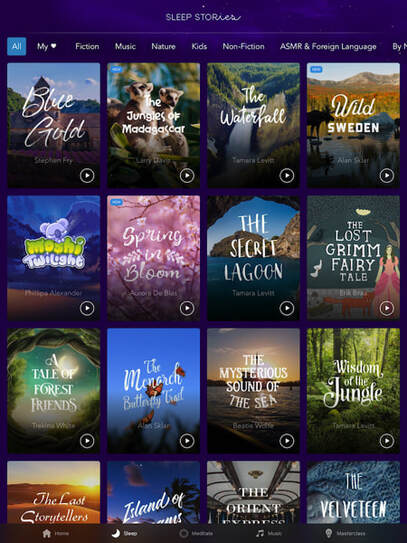 Back in the UK where she lives, Phoebe is known for her books and stories about sleeping in unusual, extreme and wild places. I quite like the fact that Calm didn’t hire a scientist or psychologist to methodically bore you to sleep, but rather a storyteller. “Storytelling is such an old tradition, it’s how knowledge and wisdom has been passed down throughout history,” says Phoebe. But hang on, aren’t you essentially writing stories so boring it puts people to sleep? “As a kid, you didn’t want a boring story, but there’s definitely a technique involved. There can’t be too much action or excitement, and it should take you on a journey, which is why trains, boats, rivers and forests work so well. Feedback suggests that most people fall asleep within five to ten minutes, but I get lots of emails from people around the world wanting to know more about the places I write about.” Places like the lavender fields of Provence, the jungles of Madagascar, the Mississippi River and the forgotten forests of Morocco. There are travel stories about oceans and deserts, safaris and night skies. There are train journeys aboard the Orient Express, the Trans-Siberia, and yes, our adventure aboard The Ghan. We both agree that stories are a far healthier alternative to medication and sleep aids. “These days, we often treat sleep as an inconvenience,” Phoebe explains. “There’s so much going on and instantly available that we can’t switch off, which only adds to the anxiety.” It’s why she turns off her devices at least an hour before bed, keeps her bedroom free of distractions, and is passionate about sleeping in the wild. “When it gets dark, you sleep, and when the sun rises, you wake up. It’s the natural rhythm of our bodies, and it makes you feel calm and rested.” Unlike Phoebe, the very thought of sleeping outdoors, exposed and alone on say, a mountain top, freaks my poor brain out. So I’ll ignore her advice and keep my iPhone handy, ready to load up a Calm sleep story, and let her words inspire a blissful lullaby.
In a tiny room, crammed with gadgets and monitors, sits a small button. 24 hours a day, an officer monitors the equipment, awaiting a single phone call. On orders, he places a key into a slot, and turns clockwise. Punching in an access code, he takes a breath, and pushes the small white knob. In just over half an hour, a missile carrying a payload of ten thermonuclear warheads hits multiple targets in the United States. In the ensuing carnage, each warhead vaporizes an area of 200 square kilometres, along with every living creature inside it. Millions die instantly, millions more slowly from the release of deadly radiation. Life as we know it ceases to exist, as thousands of similar missiles criss-cross the skies seeing their targets. All it takes is one push of the button, located in a control room 33-metres below the Ukrainian countryside. My finger draws near. My hand starts to shake. Before its independence in 1991, Ukraine had more nuclear missiles than any other country outside the United States and Russia. Strategically and secretly distributed throughout the countryside, missile units were surrounded by armed guards, 3000-volt electric fences, and protected from attack in deep underground bunker silos built to survive a nuclear war. With the collapse of the Soviet Union, the newly autonomous nation of Ukraine chose to become a nuclear-weapon free zone, and with US support, dismantled its missiles and bases. Today, just three and half hours drive outside of Kiev near the town of Pervomaisk, the legacy of Armageddon is open to the public inside one of the world’s most bone-chilling tourist attractions. The Museum of Strategic Missile Troops is a former Soviet nuclear missile base that has been opened to the public by the armed forces of Ukraine. Under the guidance of former officers who once operated the base, visitors are led on a tour explaining how large-scale nuclear missiles were managed, maintained, guarded, and later dismantled. Other than several missiles and engines on open display, the location appears innocuous – a few low-rise barracks, a tall radio tower. Massive green transport trucks customized to transport thermonuclear warheads hint at something more sinister. Deep beneath the surface lie the control and missile solos designed to destroy the world. As a thick iron door locks us in, I descend into a long tunnel towards the command silo. Immediately, the atmosphere becomes dense, cold and heavy. Slightly hunched, I am opening the mechanical and electrical toolbox designed to initiate Armageddon. Former Colonel Mikael Kamenskov had his finger on the button for over a decade. If the orders had come down, as they nearly did on several occasions, he was responsible for pressing the button, launching the missiles, and annihilating entire cities. Moustached and balding, he is serious man, explaining the detailed security measures and base design using scale models and a stick pointer. He describes how a two-man combat crew would take six-hour shifts, capable of surviving in their subterranean silo for up to 48 days without surfacing. The Colonel does not present the face of a cold-stone killer, and yet his actions would directly have resulted in the slaughter of millions. I remove my Ray Ban sunglasses as we leave the bright sunshine behind and enter the guts of the facility. The air is cool as we walk along a narrow tunnel, once reserved for top-secret military personnel only. Heating, air, plumbing and radiation filters line the walls, while above us, a 120-ton cap protects the giant test-tube shaped silo. The 12-level underground command post silos were built on hydraulic suspensions, to function in the event of earthquake, or more likely, missile attacks. In the eyes of many Soviet soldiers, explains the Colonel, mutually assured nuclear annihilation was not so much an “if”, but a “when”. We cram into a tiny elevator and descend slowly towards Level 12. A loud ringing accompanies the elevator, along with an old rotary dial telephone in case we get stuck. I open the flap doors to find a small circular room with low ceilings, the air musky and dank. Two bunks are fastened to the walls, a simple airplane-like toilet behind a door. Bleak as a tomb, this was the living quarters for the two officers on duty. An iron ladder takes us up to the next claustrophobic level, the command room. All signs of life are removed. Trees, animals, seas, clouds and cities only exist here in the imagination. I take my seat, and imagine myself on duty, the hotline ringing. Even though the button is useless and the missiles long since destroyed, it feels like I’m playing with an unloaded gun. I’m thinking about the horrifying photos from Hiroshima and Nagasaki, displayed in the museum above. Is the barrel empty? My hand shakes. I just cannot bring myself to do it. Some buttons are just not meant to be pushed. My bones are chilled when we exit the silo, and it takes some time in the hot sun to warm them. I put my sunglasses on, my eyes struggling with the afternoon light. Various missiles are on display outside, including the CC18, a massive black rocket considered to be the most advanced and deadly nuclear missile ever built. NATO dubs this modern Russian-made missile “Satan”, an apt name for pure technological evil, carrying 10 warheads in its cap, each 50 times more powerful than the atomic bomb that exploded over Hiroshima. The most distressing part of visiting this unique Ukrainian museum is knowing that hundreds of similar bases still exist around the world, its officers on duty, waiting for that phone call. Even as Russia and the USA work to reduce their nuclear stockpiles, other countries are actively seeking their own membership in the nuclear club. Perhaps one day all nuclear missile bases will be dismantled, and similar museums will demonstrate just how close we came to cleverly engineering our own destruction. Considering Ukraine voluntarily chose to dismantle its substantial nuclear arsenal, turning this tool of “mutually assured destruction” into a vital and chilling museum, there is always reason to hope. The Museum of Strategic Missile Troops is located 3.5 hours drive from Kiev. It is open daily from 10am to 5pm. Tour operators in Kiev can arrange transport and entrance.
It took three, long hours to get to the temple. An hour of that was figuring out which bus to take, negotiating the ticket, and finding directions to the correct platform. Five people were crammed into a seat built for three, and although there were no live animals, there was a freshly slaughtered chicken. It was hot, it was uncomfortable, it was intense, and it was vivid. This is travel, and this is all worth it. I hike up the hill, and there it is, a beautiful stone temple, glowing in the sun. I take a deep breath, pull out my camera, and then I see them. Over a hundred tourists, wearing name tags, following a red umbrella. Ladies and gentlemen: begin the debate! Travellers carry towels, never iron their clothes, and freak out when there’s a schedule. Tourists stay in nice hotels, look forward to going home, and typically pay the set price. Travellers discard guidebooks, tourists clutch them closely to their chests. Travellers need a holiday when they return home, tourists leave home for a holiday. Or vice-versa. The Traveller vs Tourist is a timeless, heated debate. Many backpackers make proud, public announcements so nobody might confuse them with being a tourist. Many tourists seem compelled to sheepishly justify their package vacation, while others would never dream of leaving the comfort bubble of a tour bus. Never mind that both groups are united in the same purpose – to leave their homes and discover something new. And never mind that tourists don’t seem too bothered by the whole debate in general – it’s usually travellers, sitting in a dive bar, scratching the dirt from under their fingernails, scoffing at the thought of seeing anywhere from the comfort of, dare I say it, a brightly coloured tour bus.
At the root of this inane rivalry is the assumption that one experience is better, more authentic, and more valuable than the other. I love it when I meet “real travellers” and the conversation goes like this: Them: “Have you been to Bolivia.” Me: “Yes, I’ve spent three weeks in the country.” Them: Did you go to [insert obscure destination here]. Me: No, I would have loved to, but focused on [insert second obscure destination]. Them: Oh, then you haven’t seen the REAL Bolivia! Me (under my breath): So many stupid people, so few asteroids. Every single one of us is different, and every single one of us will have a different experience, even if we’re in the same place. Further, by definition, anyone who travels can be called a traveller. Some travellers like comfort, peace of mind with their security, being told where to go, and even what to wear. Some travellers like crowded buses, smelly toilets, sleeping in dorms and bargaining for everything. Seriously, they love this stuff! Judging someone by the experience they choose (with little thought to decision-making factors like budget, time, health, or personal preference) is like judging someone because of the colour of their skin, religion, or personal belief. There, I’ve said it. The old debate is nothing more than thinly veiled racism, which, like all racism, is steeped in ignorance, fear, envy, and several ounces of basic stupidity. Still, I don’t see the argument ending anytime soon. As I watched the busload of Japanese name-taggers descend on my (my!) hard-fought temple, having being comfortably dropped off by their luxury air-conditioned bus, I couldn’t help but feel they had missed out on the best part of the journey. And when I told them what I could expect on the long road home, they wondered why anyone in their right mind would put themselves through such an ordeal. It felt rejuvenating to be independent, but I was jealous as hell of their comfort. There’s no right way to apply ketchup to your fries, scratch an itch, or smile at a stranger. While we can always and should learn from the advice of others, there’s also no right way to see the world. There is only your way.
Luminous orange overalls flap in the strong wind, an egg-yolk sun cracks against the horizon. It’s been a physically tough hike, stumbling over loose rocks, my face caked in black volcanic dust. Atop the cone of Cerro Negro, one of the youngest active volcanoes in Central America, the countdown has begun. All that’s left to do is sit down on my wooden board, lean back, grit my teeth, and hurl down the cone, 0 to 40 km/hr in eight, wild seconds. You can tell the “next big travel thing” by watching the trends of budget travellers, and they’re heading in droves to Nicaragua. The beaches, colonial towns, accommodating locals, and prices are a backpackers dream, along with Bucket List activities like volcano boarding. From the roof of Leon’s cathedral, the largest in Central America, you can see eleven of thirteen surrounding volcanoes surrounding the city. They sit like a chain of pearls on a necklace, and when they erupt, as Cerro Negro did as recently as 1999, it can cover Leon in a layer of fine, ashen dust. Not that it bothers the backpackers at Bigfoot Hostel. When I inquire about the conspicuous absence of waivers for volcano boarding, its affable owner explains some of the legal differences between Nicaragua and the United States. If tourists want to pay twenty bucks for the opportunity to throw themselves off an active volcano, that’s their problem! Even though the volcano is at the tail end of its regular eruption cycle, and could explode any day, Bigfoot is doing a roaring trade, with about a dozen clients of all ages heading out daily, a wooden sleigh in hand, anticipating a Bucket List ride of a lifetime. It took some time to figure out the right apparatus to accomplish such a feat, with everything from fridge doors to second-hand mattresses tested to strike the right balance of speed and relative safety. One thing is certain: while Cerro Negro appears to have soft, sandy steep sides from afar, the granite dust is as sharp as broken glass. Protective overalls, eye-goggles, and remaining seated (as opposed to traditional upright sandboarding) is essential. Wiping out would tear you to shreds. It’s a forty-minute drive to Cerro Negro National Park, and it’s no accident the adventure takes place during late afternoon. The sunsets in this part of the world are atomic, November through June, night after night. We pay a small fee to enter the park, grab our boards, and start the climb up the rear of the ominous looking black pyramid. Once we begin our steep ascent, the wind picks up considerably. Blackened lava from the last eruption sits like an Exxon mess, the thick oil spilled over the countryside. At the back of my mind, I’m well aware that nobody can sandboard faster than an erupting volcano. The loose rocks are sharp but we scramble over them, shifting the awkward weight of our boards from arm to arm. Half an hour later we arrive at the outer edge of the crater to find steaming hot sulphuric ash. You can burn your hand on the ground here, so we keep walking around the lip, a silent prayer that the monster below us remains asleep. With the sun perfectly poised, our guide Gemma explains how to use our feet to break and steer. “Keep the mouth shut unless you want to chew rocks for dinner. Back straight, lean back, and smile for the radar gun at the bottom!” A thin metal sheet is fixed to the bottom of the wood, along with a piece of plastic that increases speed. As I begin the five hundred-metre slide, the grating sound of granite against metal sounds like an engine, revving fast. Rocks and sand attack my goggles, stabbing my lips, sieging my shoes. I’d scream, but it’s wiser to keep lips pursed and board straight (cone-burn awaits those who flip). Active volcanoes have intrigued many a Bucket Lister, but only in Nicaragua will you find one so creatively accessible. Safely on the bottom, the group cracks celebratory cold beers and compares experiences. “Now that’s something to do before you die!” says one backpacker. I certainly agree.
Our 4 months living in Southeast Asia can be broken down into 5 parts:
Thailand was a great start. We jumped into the deep end of digital nomadism, swimming in an exotic culture, and enjoying a slower pace after the frenetic pace of Australia. Bangkok was a sort of purgatory as we waited to visit Bali. Bali was like an overharvested cornfield, a deep disappointment sprinkled with tasty moments. How desperately we needed Hoi An to be different, to be the anti-Bali, to deliver on the promise of why we chose to visit Asia in the first place. And how relieved I am, five weeks later as write these words on the plane back to Melbourne, to reflect that Hoi An delivered. Everything clicked. The warmth of the locals was sincere and inspiring. The food was fantastic. The facilities we found were top-notch. The friends we made were lovely. The house we lived in was the best of any we’d stayed in, the water buffalo abundant, the excursions fun. And most of all, the timing was perfect. Wet season along the central coast of Vietnam officially starts September 1st, the day of our arrival. But the rains only came October 1st, four days before our departure. What September did was dampen the interest of high-season hordes. Hoi An’s lantern-lit night markets, ancient storefronts and coastal attractions were busy, but never overcrowded and unmanageable. It also meant that the locals were even friendlier, flashing their gentle smiles and gifting the kids lollipops. Da Nang, the city that services Hoi An (located 45 minutes drive away along a quiet four lane highway) is exploding. It’s got a lovely long white sandy coastline with resorts and apartments starting to encroach. “This is probably what Rio looked like in the 1960’s,” says Ana. Given its turbulent history, communist Vietnam has embraced modern tourism with a fever, attracting bus loads of Chinese and Korean tourists with mega-resorts sprouting all along the coast, edging closer and closer to Hoi An’s old city. The Four Seasons, the Intercontinental, the Sheraton – it’s all coming in thick and fast, and it’s going to change everything, indeed, it’s already changing everything. The Canadian owner of Dingo Deli – one of our favourite hangouts with its great food and play area for the kids – tells us he was one of the first European families in Hoi An, when the inbound artery of Cua Dao was still a dirt road. This was less than a decade ago. Today, coffee shops and restaurants and tour operators and ubiquitous tailor shops and ATM’s and opulent-looking boutique hotels and mini marts line the paved roads to the Ancient City. In a decade, Hoi An could well become another Bali. And while it felt like we missed the boat with Bali – which must have been incredible a couple decades ago, at least we discovered Hoi An when the going was good. When we could walk beneath the colourful lanterns, scooter through rice paddies, lie in hammocks under coconut trees, shop in busy local markets, and drink strong coffee on the patios. The kids might remember key moments from the photographs that captured our stay, but we’ll remember the general feeling of cultural bliss, contentment, and adventure. Without doubt Hoi An proved to be the highlight of our Big Year, and one we’ll always remember with great fondness. With the pace of modern tourism and the explosive growth of the mass Asian market, going back would probably be heart breaking. I’d never been to Vietnam, and now I deeply regret not putting it into my Modern Gonzo itinerary 13 years ago. It was a different country back then, just emerging from decades of Communist isolation. I’d heard a mixed bag of backpacker’s opinions: some complained they were ripped off every two minutes and hated it. Others said the people were lovely and it was their highlight of SE Asia. And now, so many years later, I heard the same stories, which illuminated the discrepancy. It appears the the big overcrowded cities are intense, and travellers feel preyed upon. Ho Chi Minh (aka Saigon) and Hanoi sound like places far removed from the reggae music, siestas and watermelon shakes we found in Hoi An. It is a small town that repeatedly came up in conversations with friends about places they loved most, and wished they could have stayed longer. Chiang Mai was the other one, and so no surprise we ended up in both. My knowledge of Vietnam, like so many 80s kids growing up in the age of ‘Nam movies, is pretty tainted by the Vietnam War, or what the Vietnamese call the American War. All that’s in the past. Heck, it seems that Communism is in the past, the Vietnamese taking their cue from China – the powerful neighbour that has played a huge influence on Vietnamese culture for millennia – embracing capitalism within the confines of a one-party state. Tourism is embraced and protected. After somehow talking my way out of corrupt police roadblocks in Bali and Thailand, I do not recall any police presence at all during five weeks in Hoi An. Gem’s Rider, where I rented our 130cc Yamaha Nuevo scooter, wanted to keep my drivers license as collateral. “But what about police and roadblocks?” I ask. “Oh, they’d never bother any tourists,” was the reply. Everything here appeared peaceful, the roads were clean, people got about their business (working 7 days a week, I should add). More than once I walked into a store during the hot mid-day siesta to find it abandoned, the products unattended and inviting theft from anyone off the street. It’s why we stopped locking the front gate. If locals are unbothered by petty crime, why should we be? The only relics from the war were the stories we heard from an Israeli we met who was disarming bombs in the countryside for an NGO – “more bombs were dropped on Vietnam than were used in the entire World War II” – and an underwater mortar shell that Ana saw in the bay when she was doing her diving certification. It continued to amaze me that these peaceful, gentle people inflicted a military defeat on the United States superpower, and then swiftly invaded Cambodia to unseat the horrific Khmer Rouge, and then held off an attack from China. The Vietnamese are strong yet peaceful, gentle but unbelievably proud. We Air Bnb’d a house located over the bridge from the Ba Le Market off Cua Dai, in a neighbourhood served by narrow alleyways that can barely squeeze a car. Next door to us was a small holding with banana and coconut trees, and across the road was a modest yellow temple on the shores of a large river. The house was called Mali One, consisting of 4 bedrooms and 4 bathrooms, two upstairs and two downstairs, typically rented individually. We took the whole place, giving Amy her own space and a different area for Raquel’s home-schooling. With temperatures ranging between 28C – 35C, air-conditioners in each bedroom were essential for sleep, and fans aerated the muggy air in the living areas. The shower pressure was great, , we could flush toilet paper, and brush our teeth with tap water. There were roosters next door and across the street, but their crows didn’t destroy us like they did in Chiang Mai. Dozens of geckos patrolled the walls, and fortunately we’d missed the brunt of mosquito season. A giant spider hung out downstairs by the front door, but we pretended not to notice it. On our first morning, discovering the Dingo Deli by chance, we met a Canadian family temporary living in Hoi An with their two daughters, the same age as Raquel and Galileo. We got to know Meredith and Jonathan, Charlotte and Aria well over the next 5 weeks, and shared the joys and challenges that come with schlepping your family around the world. They introduced us to Kahunas – a friendly backpacker’s beach club that welcomed families to swim in their pool and use their beach chairs. No $50 entry fee, no Bali exclusiveness. Having broken in our scooter skills, we could pile onto the long backseat of the Yamaha and cruise the relatively calm streets of Hoi An and its surrounds. Vietnamese scooter driving is as insane, probably more so, than in Bali. Bikes come from every direction, at any time. People bike on the wrong side of the road or on the pavements, using lights when they feel like it, carrying washing machines or mirrors or other bikes on their bikes, honking repeatedly and unnervingly. We saw a couple accidents, and drunk people who could barely stand much less pilot a bike. One hapless duo as so hammered on their bike they literally fell over in the middle of the street. The difference with Bali’s madness is that there was a lot less traffic. Outside of the hectic 4pm to 5pm school hour, the roads were generally calm and the highways basically empty. Ana and I took the bike on a roadtrip to the Hai Van Pass, cruising over mountains and through some of the busier traffic areas in Da Nang. As crazy as the riding and traffic was, it never felt nearly as dangerous and as desperate as in Bali. As a bonus, concrete paths created shortcuts through the green rice paddies that surrounded Hoi An, showcasing water buffalo and farmers in pointy hats accompanied by wonderful feelings of exoticness and travel buzz. I never wore a helmet, and have confirmed that riding a scooter with the warm tropical wind in my hair is as close to nirvana as I can be, more-so when I feel Raquel hugging me at the back, and have Gali holding onto the antennae-like mirror stands in the front. Speeding along the the “water buffalo road” to Kahunas, and zipping about the rice paddies on the bike, comprise my singular best moments of the entire year abroad. Just about every morning I would pop on the bike and ride around the corner – slowly across the road that became more and more flooded – to the Ba Le market. Fresh bananas, mangoes, dragon fruit, watermelon…I’d have to haggle but at 17,000 dong to one Canadian dollar, it was always a bargain. Some ladies ripped me off more than others, my favourite was Miss Huey, who always added a handful of fresh mint, spring onions, basil and other herbs the Vietnamese add to the soups, noodles and sandwiches. Across the road was the white house bakery, where I could buy fresh baguettes and breads, and a little further down, the Hoi An version of Bali’s Everything Shop, although it wasn’t very big and certainly didn't have everything. There were no supermarkets in Hoi An, no 7-11s, no Cocomarts or Pepito Express – and the two stores that sold groceries left no doubt that it was cheaper and a lot easier to just eat out. Meals would cost between 30K – 130K, depending on the type of restaurant, and unlike Thailand or Bali, there were plenty of affordable Western options. Raquel liked her freshly squeezed lime juice, Gali his watermelon juice, and every day the kids would have their Yakult and Milo drinks, along with homemade ice lollies from juice. We made our own smoothies, and although I cooked schnitzel a couple times, we got a lot of take-aways from one-person kitchen restaurants nearby. Visitors to Hoi An typically come for about 2-3 days, rent a bike to cycle in the rice paddies, visit the lantern-lit Ancient Town, check out a few temples perhaps, and pop into a tailor to get a suit, dress or shirt made. Every Friday we’d go to the Chabad – always the only non-Israelis – and those we spoke to were amazed we were actually living in Hoi An. “But what is there to do here?” they’d ask, and we’d say, “not much, which is why we love it.” After having done so much this year, the opportunity to spend days by a luke-warm pool drinking Larue, Saigon or Tiger beer sold cheaper than bottled water while the kids play with new friends to the tunes of vintage reggae is as close to paradise as we can hope for. Of course we got the suits and dress made, it’s the thing to do here, and you’ll struggle to find bespoke tailoring cheaper. On the advice of someone from the Hoi An Expats Facebook group, we ended up at Cloth Shop Sue, where I got a suit, a blazer, 4 shirts and 3 waistcoats, and Ana got a suit, dress, and pants. Shipping wasn’t too expensive, so we sent 26kg of clothes, souvenirs, books, and other stuff we’re trired of schlepping around home to Canada via sea. Hopefully it arrives! In our home was a 2002 copy of Lonely Planet Vietnam, and the country it describes is very different from the Vietnam 16 years later. Hoi An is described as a small but popular town famous for its temples - we only visited one of them, by accident. Our two sojourns were me taking Raquel on the bike to the Marble Mountains, a series of limestone outcrops overlooking flat Da Nang. We took the elevator up to the top and visited a couple cave temples, sweating bullets in the process. After riding 90 km;/hr with Raquel, I’m more confident than ever to get a motorbike! Our second adventure was to the Ba Na Hills, a bizarre kitschy French medieval-style theme park built high in the mountains, and serviced by cable cars. It was expensive and took a while to get to, but the admission price included all the rides, and they’d recently unveiled a stunning “hand” bridge that made world news when it was unveiled a few months before we got there. We went to see a water puppet show, which was quite fascinating, visited Cham Island, which was less so. Amy took the kids on a small traditional boat that looks like a saucer, after which they made stuff with coconut fronds. We visited the Ancient Town a couple times, took the boat on the Ancient Town to let the kids make a wish as they released a floating candle-lantern. We hit pub night where we didn’t fare particularly well but did win a pitcher of beer, and followed that up by a visit to the Dive Bar, which wasn’t a dive bar at all, and watched Jonathan support the local nitrous oxide balloon dealer. With booze this cheap, tourists were more than happy to buy rounds for everyone. For Ana’s birthday, Amy looked after the kids while Ana and I spent the night in a fancy hotel, having dinner and dancing to a samba band (yes, a samba band!) at a place called Soul Kitchen in An Bang. From the layabout couches to the kid-friendly restaurants on the beach, there was just so much to love here. Raquel even took ballet classes on Saturday mornings, with an English teacher who knew what she was doing (in stark contrast to Bali). The expat community heard about us and it’s a small circle – the folks with young kids living in a small town in a strange country. Otherwise, no lost boys in caves or tragic earthquakes, although the ceremonial president of Vietnam did die, not that we (or the rest of the world) heard much about it. A typical day looked like this: 6am - 8am: Wake up, make breakfast, hear about Amy’s evening exploits with the South Africans living in Hoi An teaching English to Chinese students online. 10am – 2pm: Kahunas or playdate 2pm – 4pm: Gali naps, Raquel does school with Miss Amy downstairs, Robin works in Australian Bucket List website/Ana explores/get PADI certified/rides around looking for baguettes. 4pm – 6pm: Kahunas or playdate with Charlotte or bike ride to the water buffalo or or some such thing. 6pm – 8pm: Dinner, shower and bed time. 9pm – 11pm: Monopoly Deal or Netflix or Pub Quiz or Girls Night Out or Book Reading or Sleep. Other memories: The Koi Café, the karaoke clubs, the weddings, the trips to the one ATM machine where you could withdraw 5m dong. The inflatable pool on our upstairs patio, emptying the water over the sides into the banana trees. Rosh Hashana and Yom Kippur, the Chabad eggplant, hunting for diapers, hunting for new shoes for Gali. The challenging Wednesday night Pub Quiz (the most populous mammal on Earth is not humans!), the Birthday night away in a real hotel and dancing to Samba at Soul Kitchen, the horrendous sound of river frogs, the power failures, the horrendous sound of Vietnamese karaoke, the insanely strong coffee, the kids doing this, the kids doing that… It’s all a blur, and time does fly when you’re having fun. Unlike Bali, where the highlights were crisp because they were fewer and far between, days in Hoi An blended into each other the way we blended the market fruit into smoothies. At the the end of it, when Amy looked after all four kids and we hit the town with Jonathan and Meredith - four parents of four young kids bewildered to have some fun time to ourselves - we realized we’d be sad to say goodbye, and yet if you don’t, months will blend in the same sort of motion blur. It’s just hard to get much done when the going is this good, and it’s the closest we’ve had to a family holiday since we took the kids to Maui in April 2017. For despite what people think, just because you’re travelling, it doesn’t mean you’re on vacation. At least, until you find yourself in a place like Hoi An, the kind of place travellers visit for a few days and end up staying for a few weeks, the kind of place that vindicates your wild, crazy, irresponsible and risky decision to go travelling for a year in the first place.
After so many miles, misadventures and meat pies, I'm delighted to be launching my 9th book, The Great Australian Bucket List , available October 9th online and in bookshops throughout Australia and New Zealand. It's been a very long and very wild ride, packing in years of travel into six crazy months, and years of writing into the same. As for bringing along my family, two kids under five can only make the intense travel and writing easier right? Right. As with my previous books, I believe that essay-style stories inspire, and are best read on a printed page illustrated with beautiful photography. But I believe that practical information is important too, best accessed online where it can be easily and frequently updated. The Great Australian Bucket List follows this successful formula: a stunning, inspiring book supported by an extensive companion website - www.aussiebucketlist.com With any luck, both will have the same impact in Australia as the The Great Canadian Bucket List had in Canada: inspiring millions of locals and visitors to explore unique, one-of-a-kind destinations and activities around the nation (and becoming a smash bestseller as a result). From jungle surfing in the world's oldest rainforest to swimming with giant tuna, chasing ghosts in haunted prison cells to hiking the remote outback, Australia has buckets of amazing stuff to explore. Here's a quick peek at what I got up to: The book is published by Affirm Press, the fastest growing publisher in Australia, driven by passionate readers who believe in stories as much as I do. I have to give a shout out to my amazing sponsors and partners: Presenting Partner Ford Motors Australia, Oaks Hotels and Resorts, Jetstar Airways, World Expeditions, Journey Beyond, Discovery Holiday Parks, Move Yourself, Sunshades Eyewear, Tourism Tasmania and Queensland Tourism and Events. Thank you! The family travel project was an entirely different trip altogether. You can check it out at the online trip journal we custom-designed to record the adventure: www.esrockingkids.com. Along with our partners above, special thanks to Valco Baby, Keen, Footwear, Britax and Victorinox. I met so many wonderful people on my journey, and as always, the people I met (and the family I travelled with) shaped my experience. I learned so much about Australia, and myself. This is what travel does: new places stoke new emotions, new people stoke new ideas, new landscapes inspire new life stories. There's no word as yet if/when The Great Australian Bucket List will be available on shelves outside of Australia and New Zealand. I'd love nothing more than my Canadian, Global and Australian books to find their way to stores worldwide, but that's up to the gods, agents, and the publishing industry. In the meantime, you can buy it online anywhere through Book Depository (with free shipping worldwide) and in Australia online through Booktopia, Dymocks, Collins, Big W, KMart, Newslink, QBD or fine indie bookstores. As always, it's the perfect gift for everyone from kids to grandparents, and will appeal to all ages and interests. Thanks as ever for the support, and may your travels continue to be rich and fruitful.
Robin Three hours drive from the Chilean capital of Santiago is a ski resort without any shops, malls, or promenades. There are no restaurants, bars or hotels either. There’s not even a ski lift. Yet it still attracts clients from around the world, and for good reason. Ski Arpa is the dream of a lifelong ski instructor who scrapped and saved over three decades to open a mountain for anyone in love with stunning views, and untracked snow. Here, two Pisten Bully Snowcats shepherd up to 22 skiers to the top of the mountain, where they have mind-boggling access to 4000 acres of skiable terrain. Toni Sponar, a veteran ski-instructor of Aspen, Banff, and number of South American ski resorts, bought 5000 acres of land back in 1983. At just $5000, it was a bargain even for a ski instructor. The location was ideal. From atop the peak of Alto del Arpa you can see the Pacific Ocean to the west, and Mount Aconagua, the tallest mountain outside the Himalayas, to the east. The south facing slopes receive plenty of sun, protected from harsh winds, with chutes forming in natural abundance. Surrounding you is the Andes mountain range in all its glory - so different from the view in the Rockies, or the Alps. A year after his dream purchase, Toni installed a ski lift and set to work creating an 8km switchback road to the base lodge. Then disaster struck. A massive storm dumped metres of snow, causing an avalanche that wiped out the lift, the lodge, and all of Toni’s savings in the process. He would still visit his mountain with friends over the years, but it would take another 20 years before he could resurrect his dream of a skier’s ski resort. He purchased two Snowcats, aligned with booking and marketing agents, and finally created the most rewarding catskiing operation on the continent. Clients visit from around the world for the powder, the sweeping vista, and the unlimited fresh tracks. As we slowly make our way up the switchbacks, the van abruptly stops and one of my fellow passengers throws up. It’s a rough road, which Toni maintains himself, zig-zagging 600m up the valley. I’m feeling a little queasy from the altitude, but the excitement seems to settle my stomach. I only discovered the joy of snow when I moved to Canada in my twenties. When I was 6 years old, a once-a-century freak snowstorm hit Johannesburg. My schoolteacher, having never seen snow, made the class hide under our desks. She thought it was nuclear fall out. I was retelling the story in the van as the switchbacks became ever steeper. Finally, our Swiss driver announces we have arrived. Next to the parking clearing is a humble, rustic building, built deliberately into the hill to avoid being wiped out by an avalanche like its predecessor. I am blessed with perfect conditions – the sky is clear and blue, and a 20cm of snow fell overnight. I sign a waiver, and get handed an avalanche transmitter by Anton, Toni’s son and partner in the operation. There are a dozen clients today, made up of Americans from Colorado, some French, some German. This is not Whistler or St Moritz or Aspen. We have all packed our own lunch, and accept the simplicity of the amenities. We have come for the snow, not the glitz. It takes 45 minutes for the powerful snowcat to make its way up the mountain. I am standing at the back of the outdoor passenger area, watching Toni and another skier being towed behind us. The snowcat eats the steepest of inclines, charging like a tank up towards the peak. The air gets thinner and colder, and suddenly, the full might of the Andes appear on the horizon, a true alpine wonderland. After a final push from the powerful cat, my back against its protective rails at a near 45-degree angle, we arrive on the peak and dismount. The groups split up respectively, choosing a wild multitude of lines. Mount Aconagua, nearly 7000m high and dividing the Argentinean and Chilean border, beckons me forward. I let out a Wilhelm Scream, for if you can’t scream at the top of the world, where can you? Within seconds, I begin carving this mountain like a Thanksgiving turkey. A full day with Ski Arpa includes four runs with a guide. By my third run, I am feeling braver, dropping into a gully to attempt an unsuccessful launch through a chute. It takes a while to dig myself out. Toni joins me on the next run, rocketing down his mountain, enjoying the start of another stellar season in Chile. He whips down so gracefully I find it hard to believe he’s old enough to be my grandfather. Meanwhile his clients are bonding over fat smiles and white powder. Warming up in the sun outside the base hut, we all agree: Who needs malls and promenades when you have a 1000m vertical descent on some of the best powder in the world? Especially when you have it all to yourself. Ski Arpa is located near the village of Los Andes, 108km from Chile’s capital city Santiago.
Santiago Adventures (http://www.santiagoadventures.com/) provide hotel pick-up and guide service. If you drive, a 4 X 4 vehicle is essential. Reasonably priced gear rental is available through Santiago’s KL Adventures (http://www.kladventure.com) en-route. Ski Arpa’s season typically runs mid-June to mid-October. It is said there are three simple steps to happiness: find something to do, someone to love, and something to look forward to. I might add: find yourself a bike. One day, on my way to the office, an unlicensed driver ignored a stop sign, drove through an intersection, and crashed into my bike. I hobbled away with a broken knee-cap, a $20,000 insurance settlement, and the powerful reminder that life is precious, time is limited, and I’ll really miss my knees when they’re gone. I quite my job and went travelling around the world on a Quixotic quest to tick off my bucket list. All of which brings me to the dusty Chilean town of San Pedro de Atacama. For an outpost on the edge of the world’s driest non-polar desert, the town offers fine hotels, gourmet restaurants, and excursions into a truly remarkable slice of South America. One such activity is to rent a bike and peddle thirteen kilometres west into the Valley of the Moon, a protected nature sanctuary famous for its stark, lunar landscape. I arrive at the park gates with my front tire wobbling with all the stability of a Central African government. Parched for oil, my chain clatters in desperation. I make a note that from now on I will check the condition of any bike before I rent it. Sound advice, and I could have used some more, for example: under no circumstances must you leave your bike on the side of the road to hike around looking for better views of the volcanoes. Soon enough, I am lost in the desert without any form of communication, directions, food, or warmth. It is late afternoon in March, and the baking day will soon transform into a chilly night. My last update to my family was last week in Bolivia. Not a single person on the planet knows where I am. 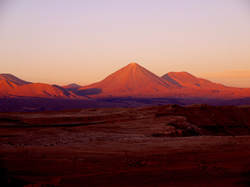 Before I set out on my journey, a friend asked what I hoped to achieve. My mates were settling down, building careers and starting families, so why would I choose to be that one older guy you typically meet in backpacker hostels? You know, the one who looks a little out of joint, has great stories, and often smells like Marmite. My reply: at some point during my adventure I will stumble into a transcendent moment of pure isolation, a challenge that can only be surmounted with deep soul-searching, and personal inner strength. My friend looked at me askew, so I followed up with: there will also be copious amounts of beer and beautiful women. Just a few months after that conversation, there is neither beer nor babe for miles as I desperately scan the sprawling Atacama Desert for my rickety rental bike. Panic begins to tickle my throat. It appears that my Moment of Zen has arrived. I sit down on a slab of rock and breathe it in. The dusky sun casts a pink glow over perfect pyramid-shaped volcanoes. Early evening stars begin to glitter. A cool breeze sprouts goosebumps on the back of my neck, along with my long-awaited epiphany. I am here for a reason. Everything happens for a reason. The bike accident, the decision to travel, the dodgy rental bike, the walk into the desert. Wherever I am, is where I am supposed to be. Slowly, I relax into the fear and excitement, slipping into the moment the way one cautiously eases into a too-hot bubble bath. Then I hear a voice. A Japanese backpacker had seen my bike on the side of the road and figured there must be something to see. Soon enough, he got lost too, but somehow he found me just as I was busy finding myself. As the night sky vanquished the peach-fuzz sunset, we see headlights in the distance. Relieved, we find our way to the road, recover our bikes, and pedal in darkness back to San Pedro. That night we get blindingly drunk to celebrate our good fortune, and I have my second epiphany: it is the people we meet who create the paradise we find. Ten years and one hundred countries later, there have several other moments of life-affirming clarity. As for those three simple steps, they sorted themselves out beyond my wildest dreams. Whenever I find myself lost, at home or on the road, I simply remind myself: wherever you are, is where you’re supposed to be. Originally published in Get Lost Magazine.
|
Greetings.
Please come in. Mahalo for removing your shoes. After many years running a behemoth of a blog called Modern Gonzo, I've decided to a: publish a book or eight, and b: make my stories more digestible, relevant, and deserving of your battered attention. Here you will find some of my adventures to over 100 countries, travel tips and advice, rantings, ravings, commentary, observations and ongoing adventures. Previously...
March 2024
Categories
All
|

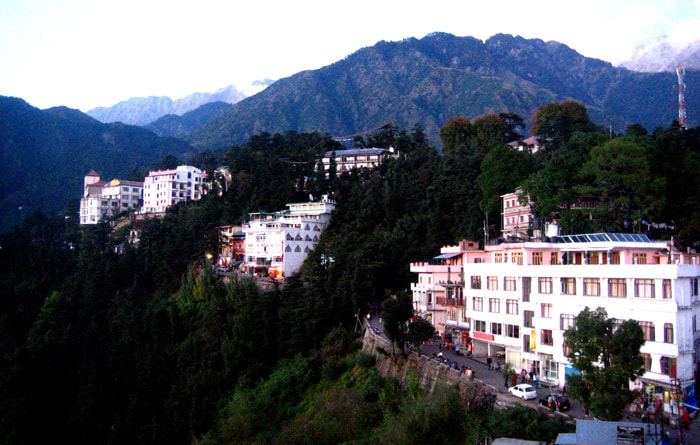
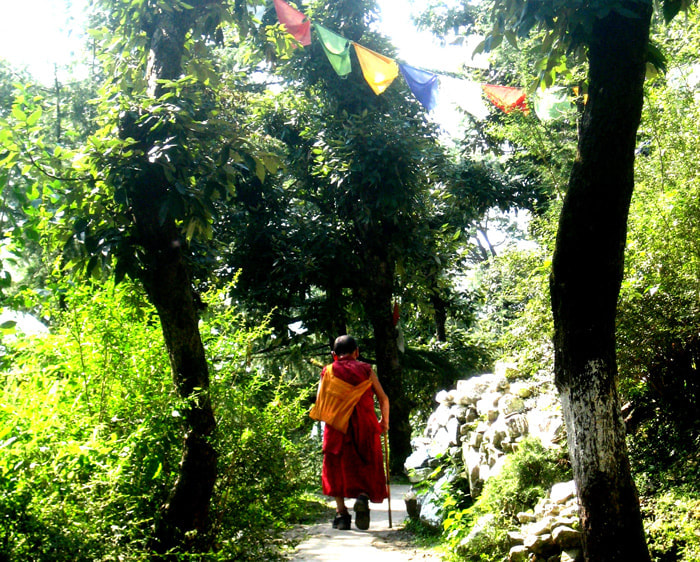
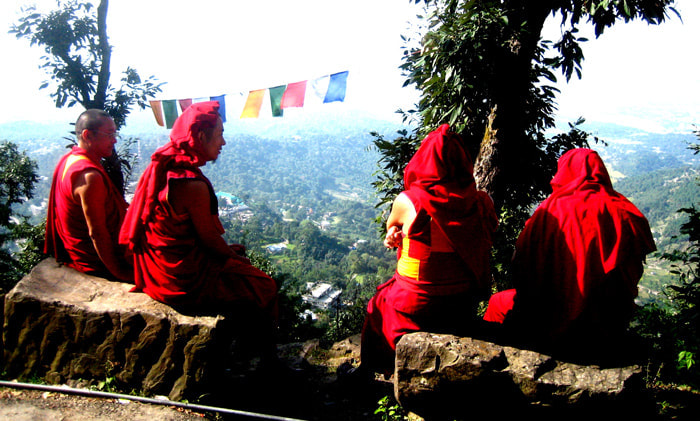
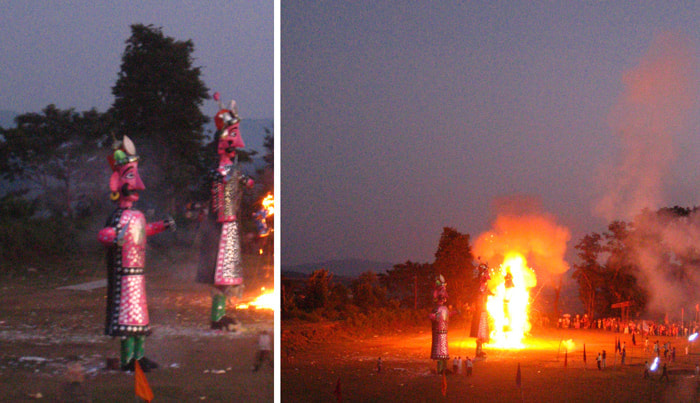
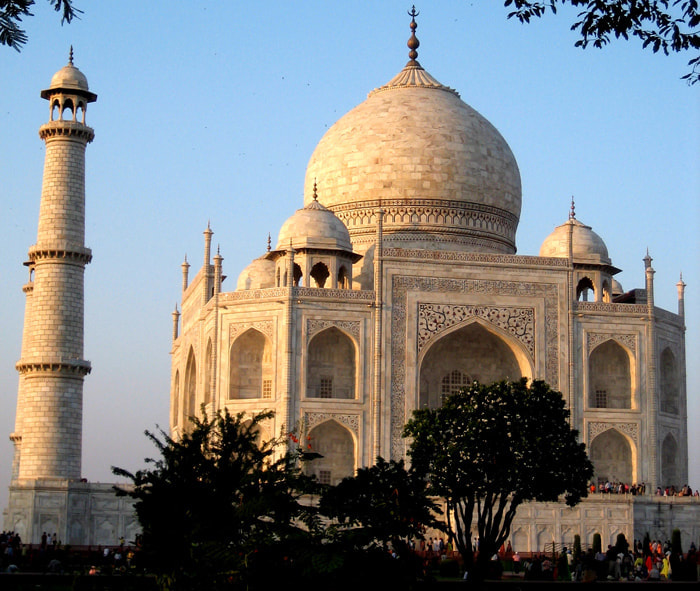
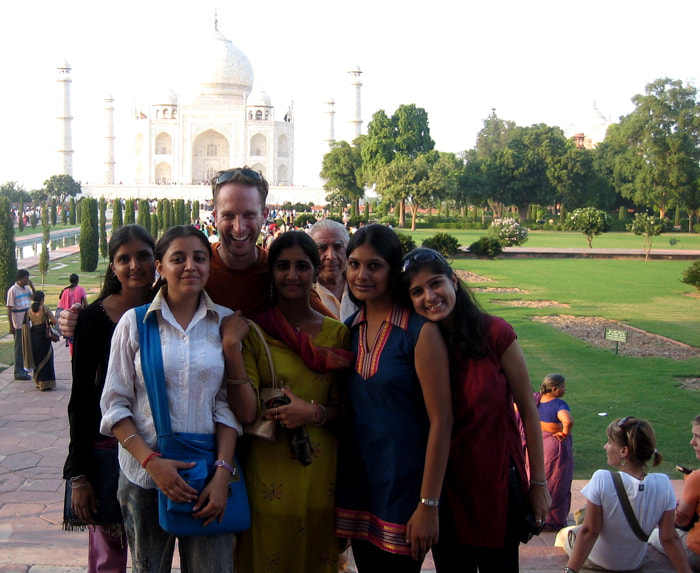
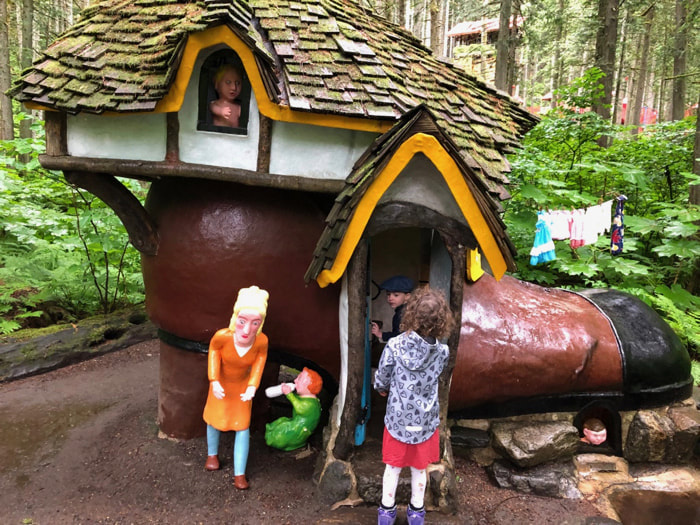
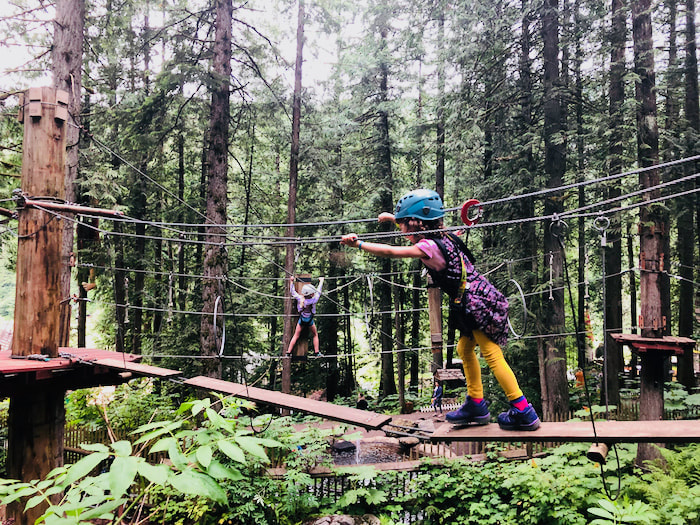
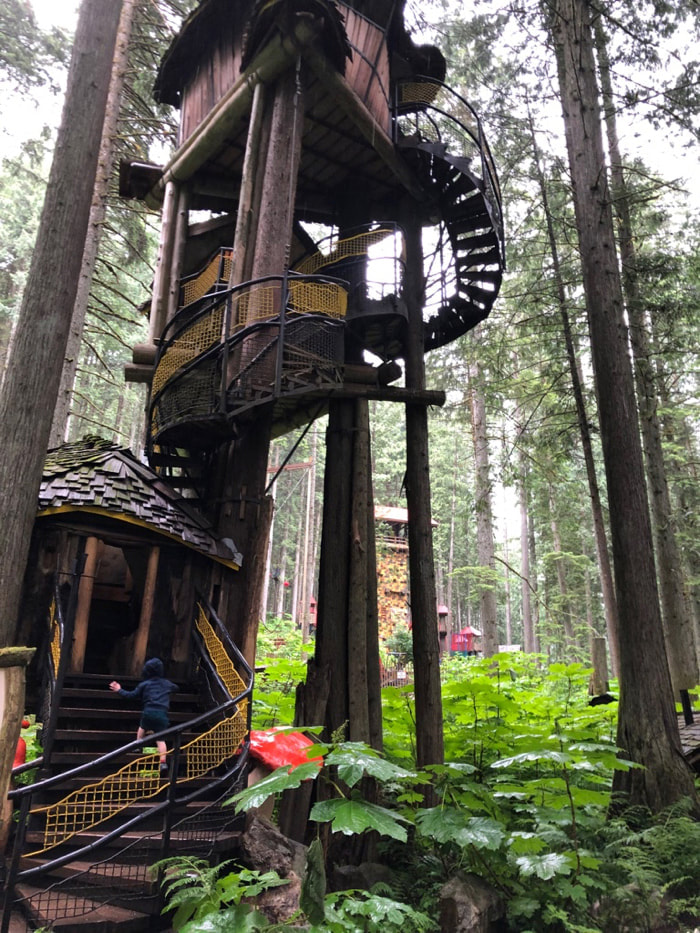
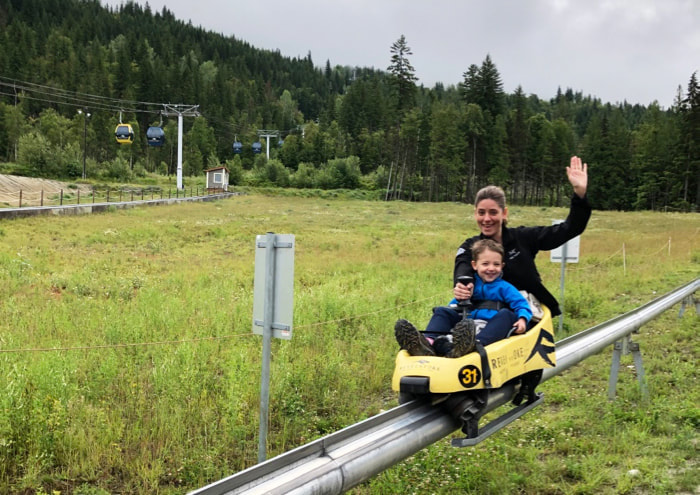
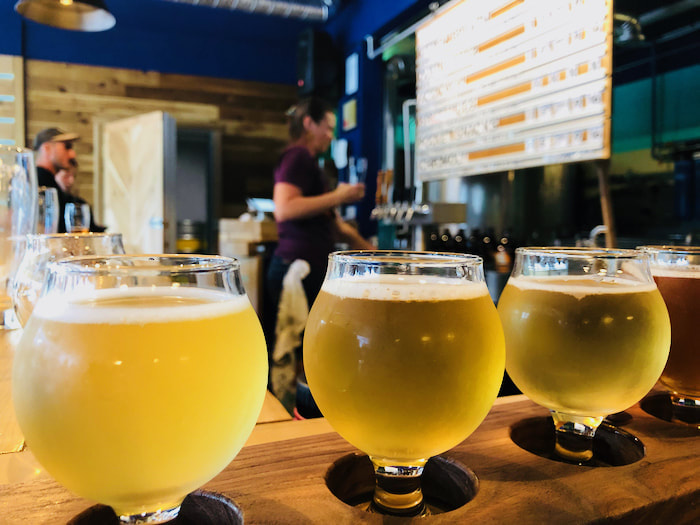
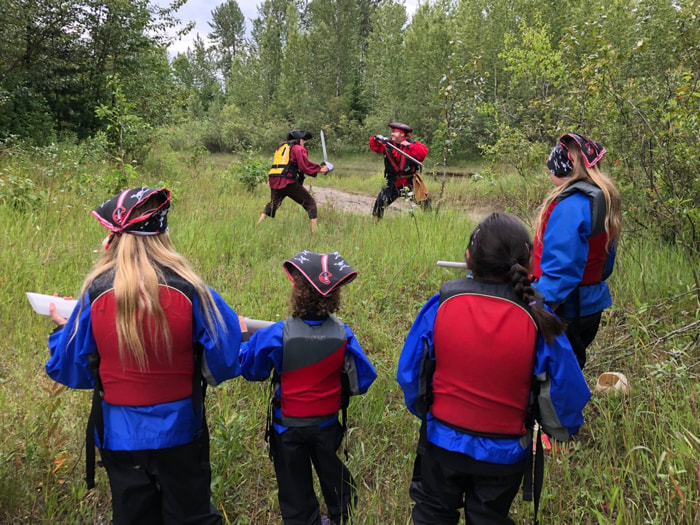
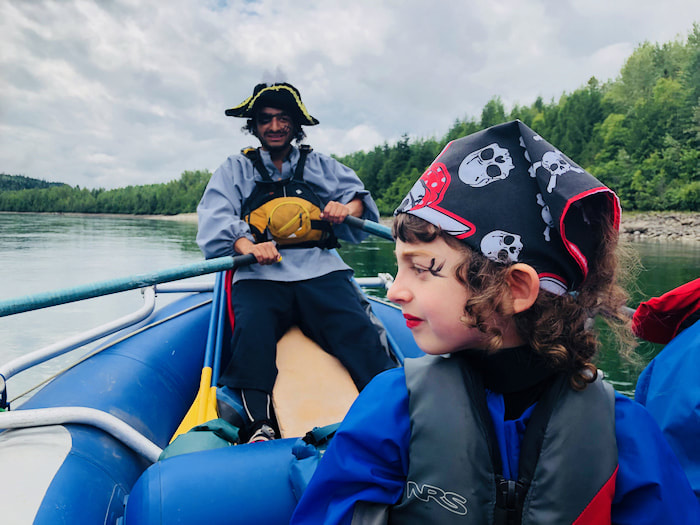
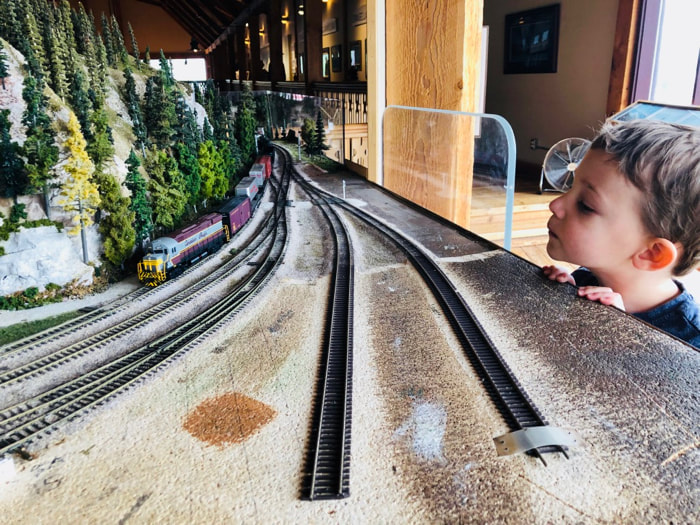
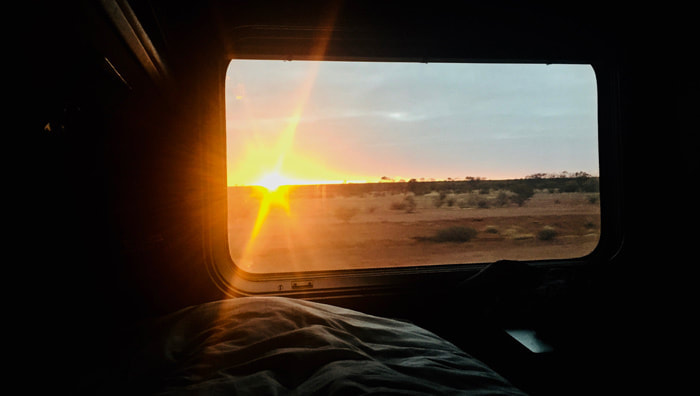
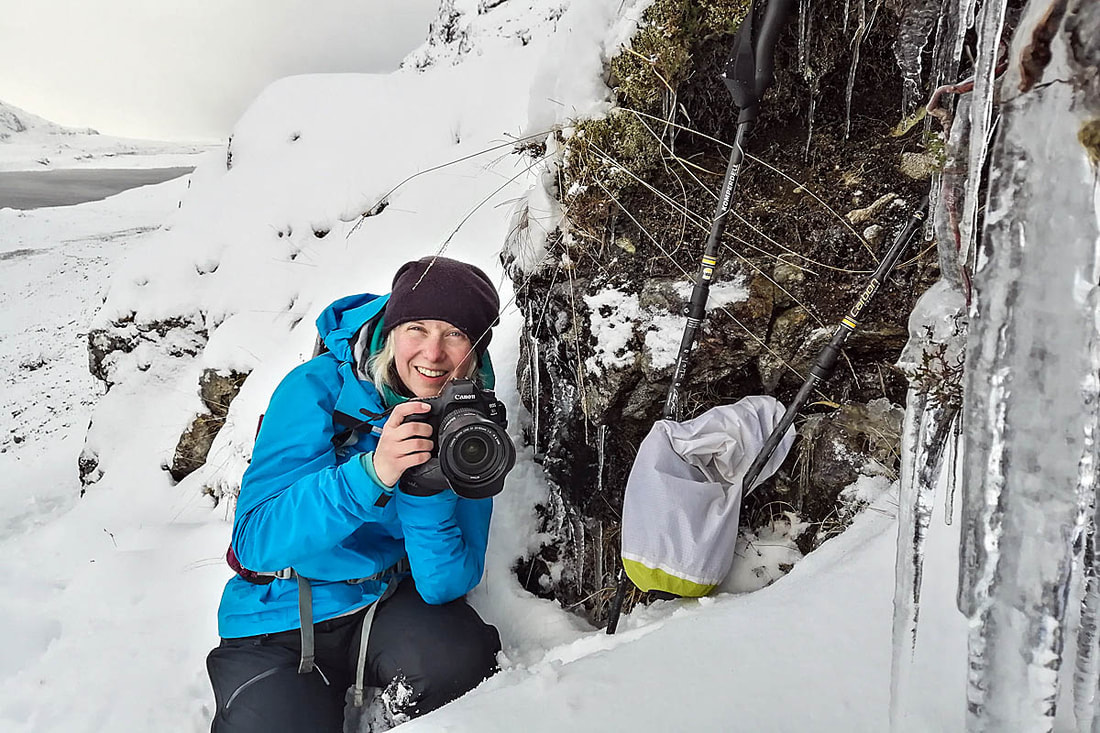
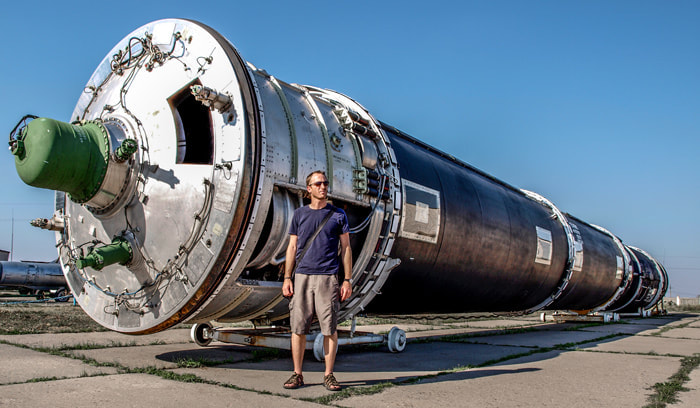
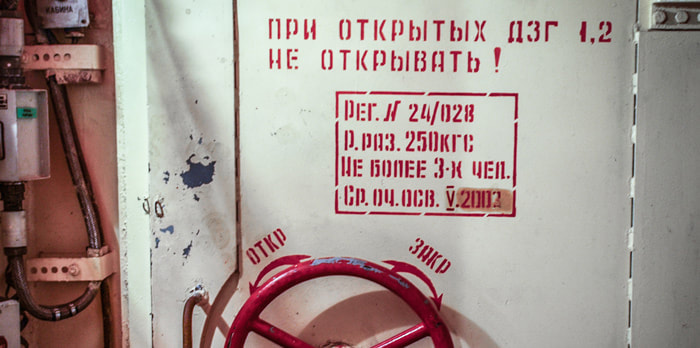
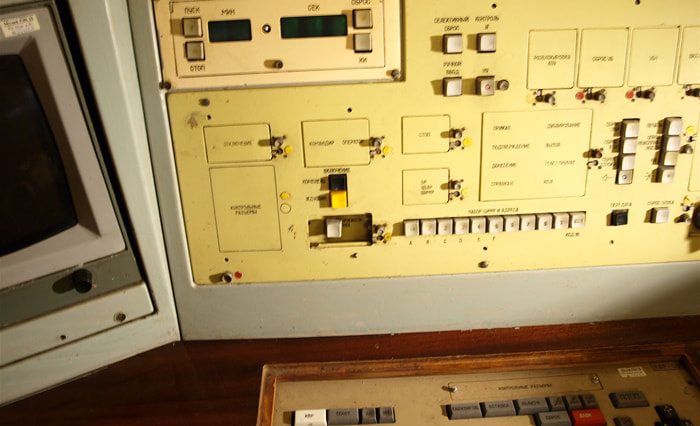
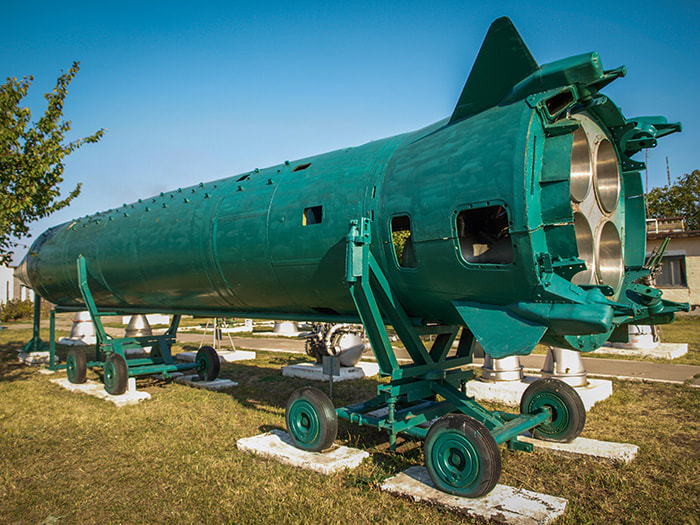
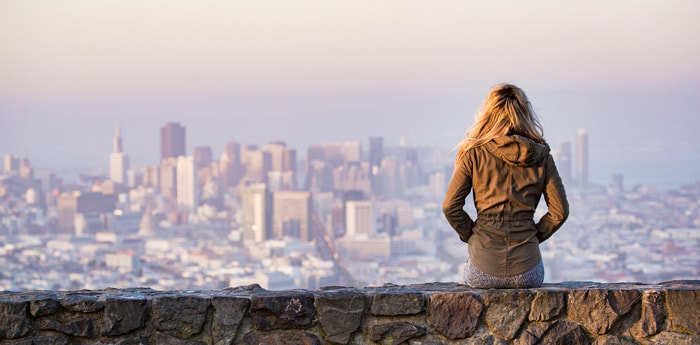
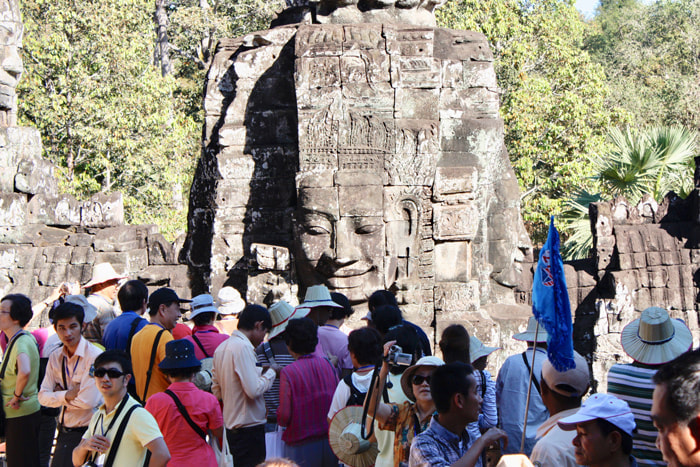
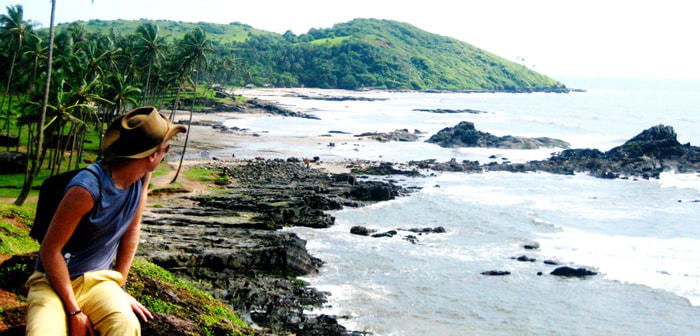
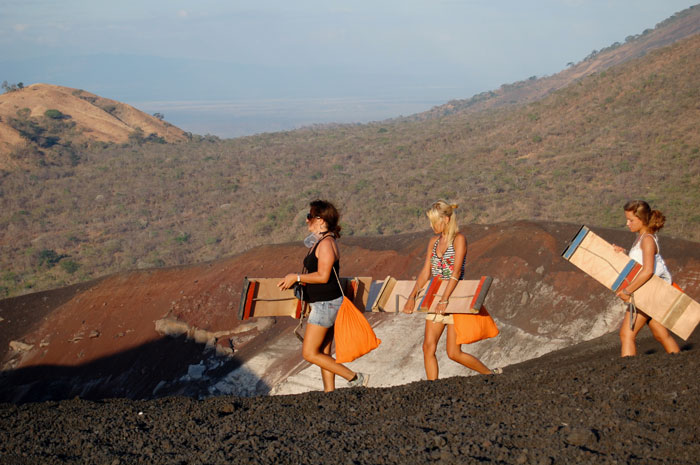
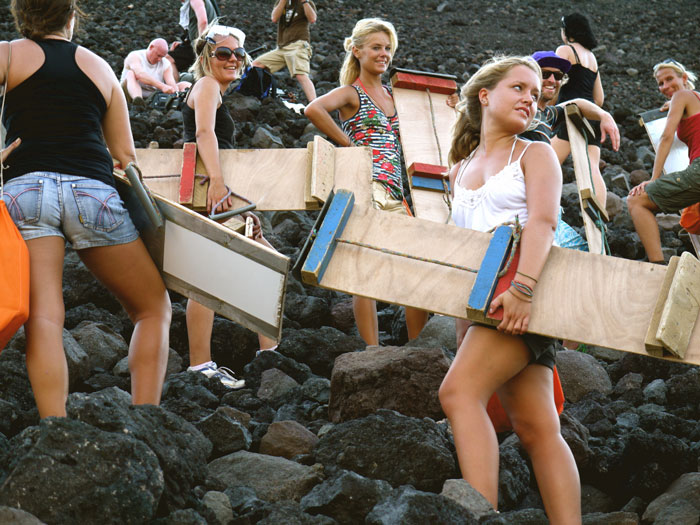
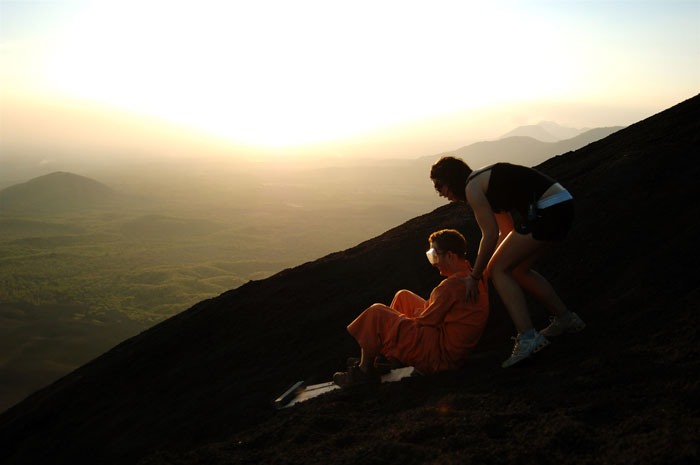
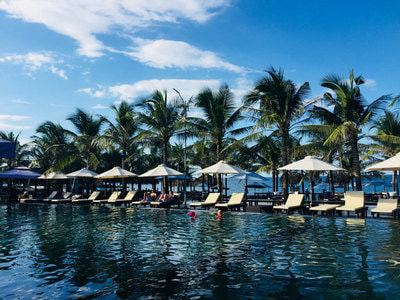
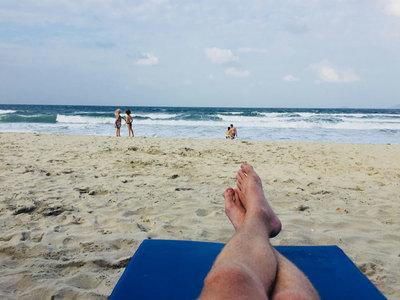
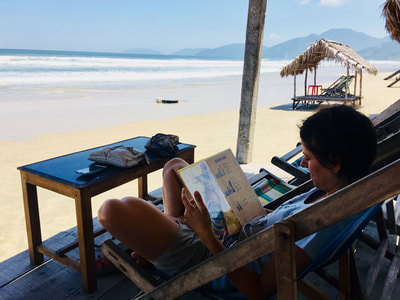
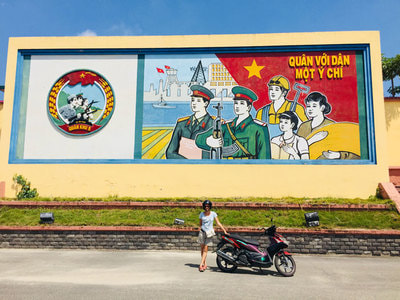
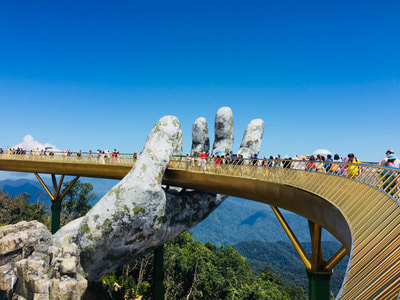
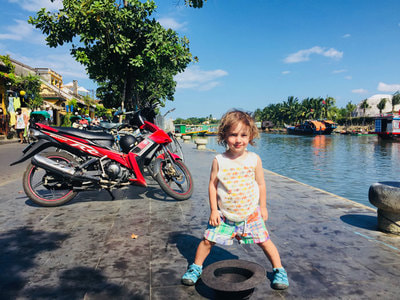
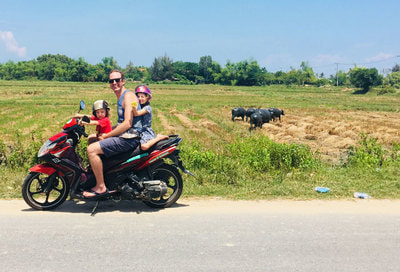

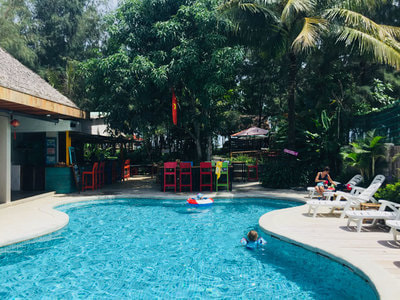
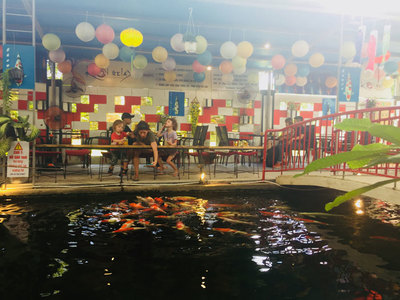
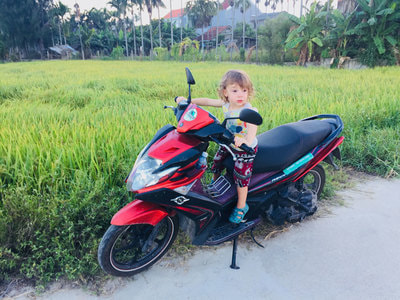
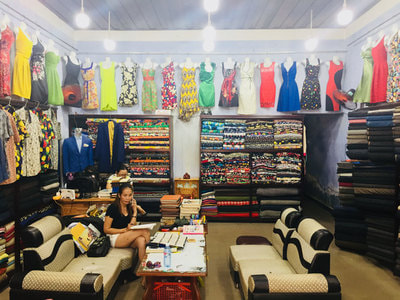
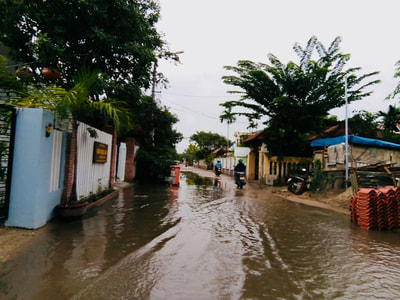
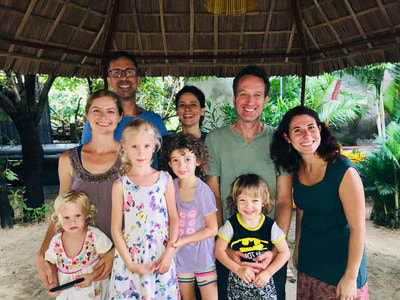
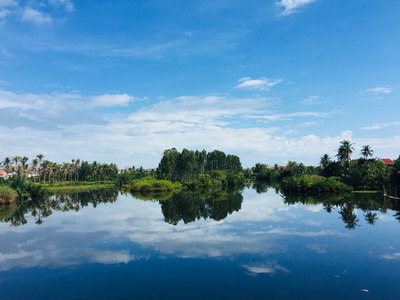
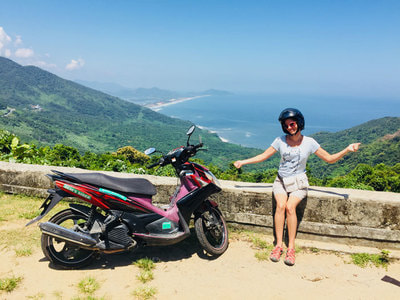
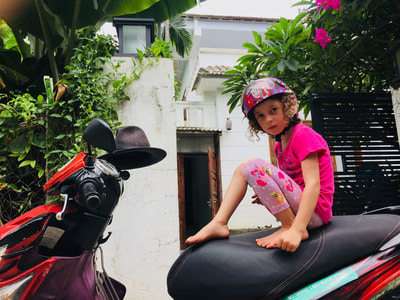
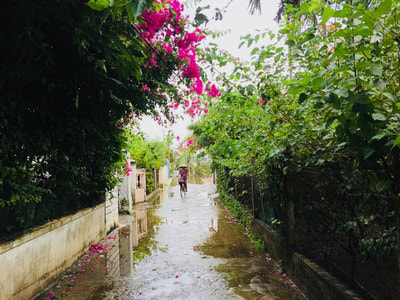
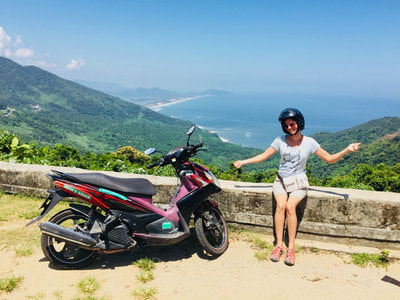
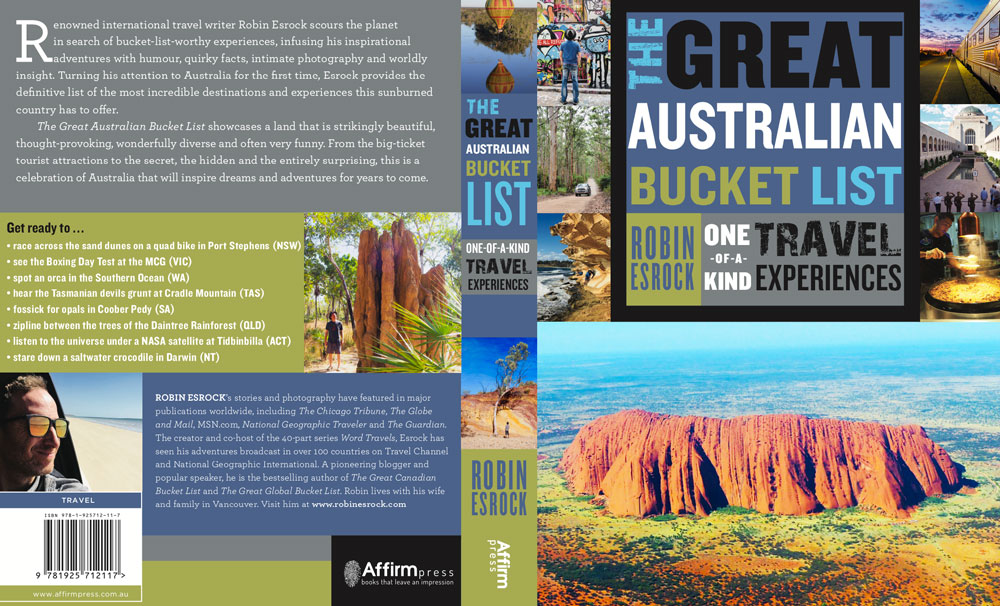
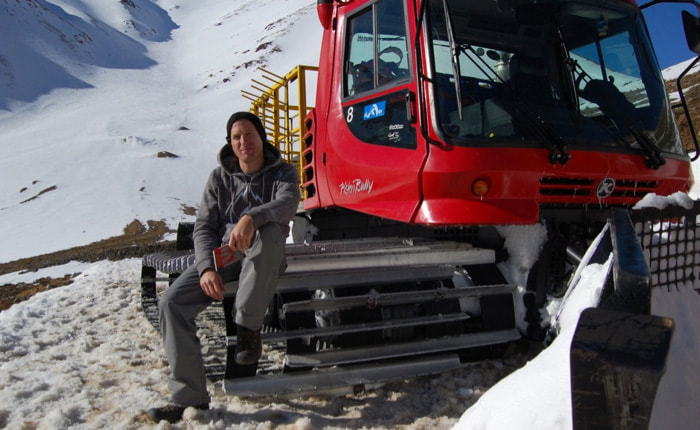
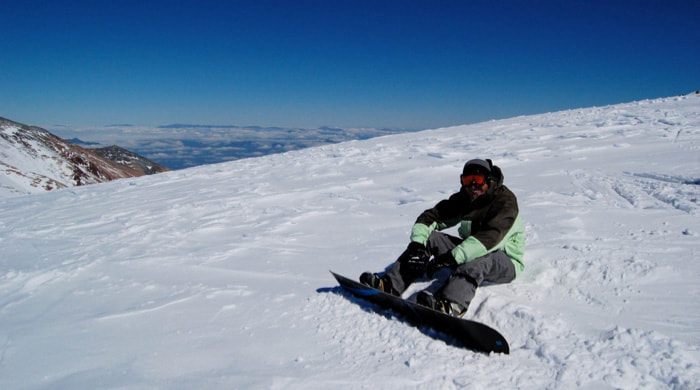
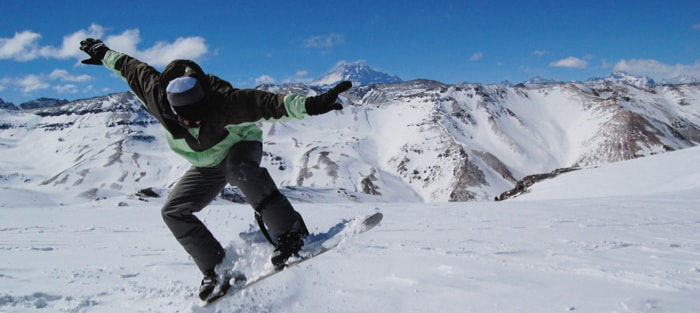
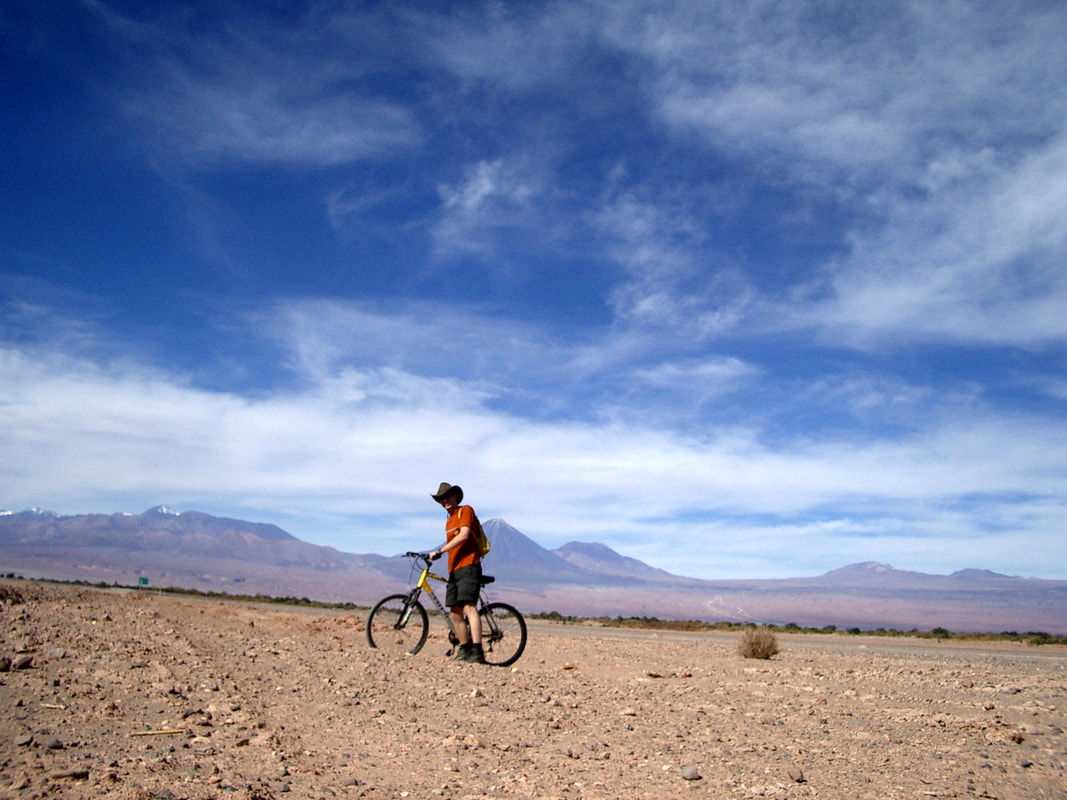
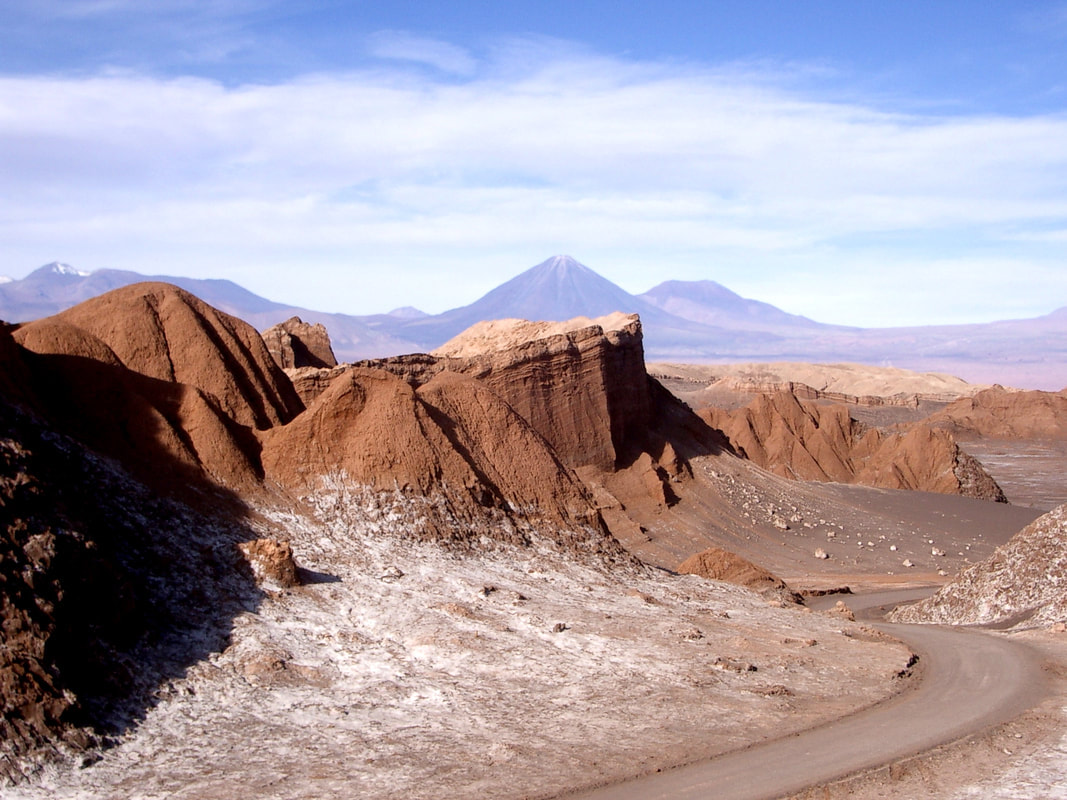
 RSS Feed
RSS Feed

